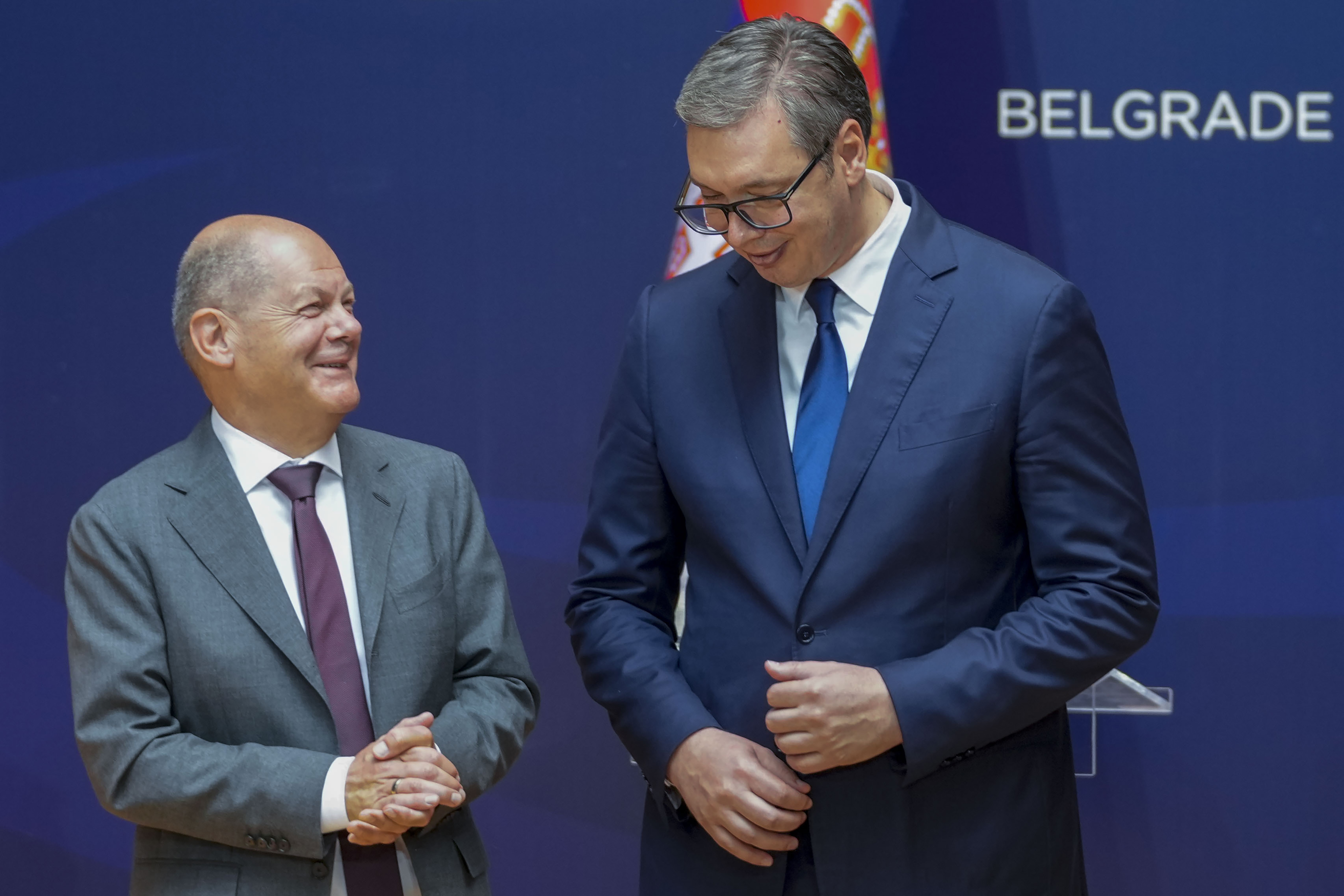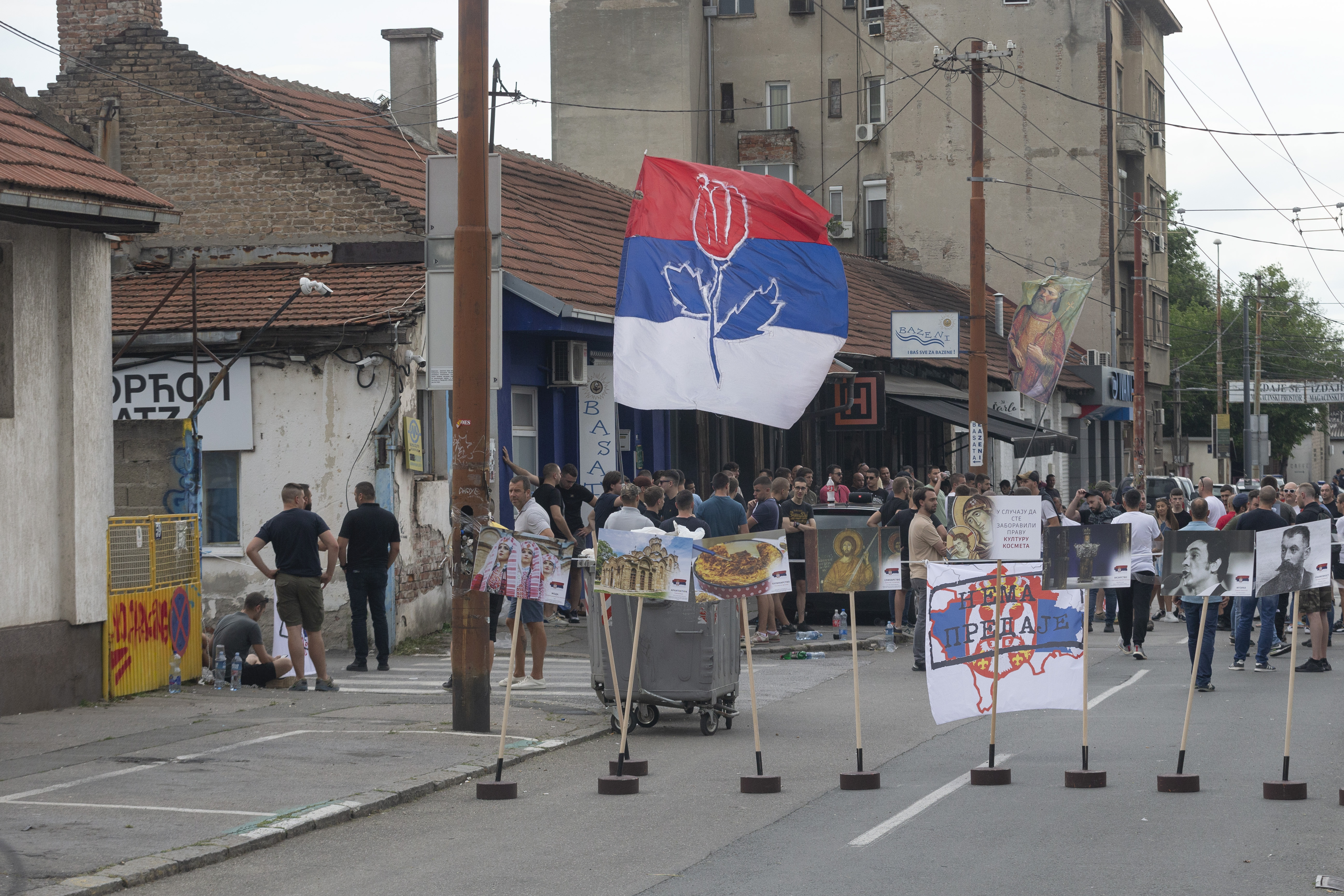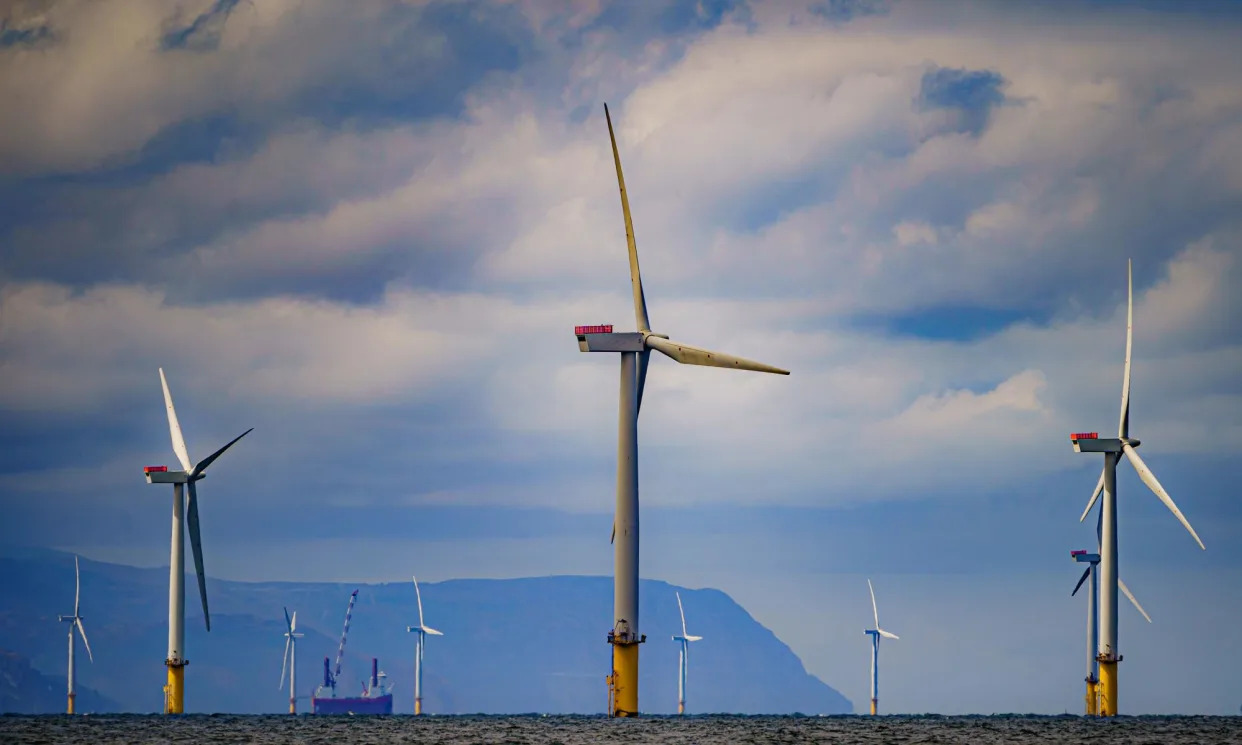ISTANBUL BLOG: Can Erdogan’s nationalist allies avoid the destiny of the Gulenists?
“I also congratulate all of my brothers who have pledged their support for this process from beyond the ocean. And given that there are messages that go from here to beyond the ocean, we should also send a message to those who send messages.”
It was September 12, 2010 and Turkey’s then prime minister, and current president, Recep Tayyip Erdogan, was giving a victory speech following the day’s constitutional referendum. The first mention of “beyond the ocean” references Fethullah Gulen, the 83-year-old Turkish preacher, who has lived in the US since 1999.
Prior to the referendum, Gulen addressed his followers with the words: “If it were possible, you should even wake up those who are in the grave to make them vote ‘yes’ in the referendum. I think they would do so.”
This call to his followers was seen by observers as an order given by Gulen to militants to rig the poll with the casting of fake votes on behalf of dead people.
Erdogan’s second reference to “beyond the ocean” is a response to critics who sent “messages” claiming that the constitutional amendment was a joint project run by Erdogan and Gulen to take over Turkey’s judiciary.
End of “military tutelage”
The September 12 referendum marked the peak of the Erdogan-Gulen partnership and the official end of the “military tutelage” regime in Turkey.
Since 2007, the military had been tamed using the “Ergenekon” court trials. The Ergenekon operation was conducted by Gulenist police, prosecutors, judges and journalists.
The Gulenist police planted fake evidence in targets’ computers and leaked details of their investigations to Gulenist journalists.
The journalists were used to prepare the public ahead of Gulenist prosecutors demanding the detention of suspects. The Gulenist judges subsequently issued orders for arrests and the suspects were jailed pending trials.
Erdogan, who defined himself as “the prosecutor of this case”, provided the required political support for the operation.
Gulenist fugitives and prisoners
Today, there are thousands of Gulenists who are fugitives abroad and thousands more in prison in Turkey. They have been subjected to one of the most radical demonisation campaigns of the age.
The Gulenists are no exception when it comes to allies who were eventually rejected by Erdogan and his henchmen.
The so-called liberals were also by 2011 among stakeholders in the Erdogan regime. Many of them are nowadays abroad or alienated.
Osman Kavala, a businessman and human rights activist, has been in prison since 2017. The regime has made an example of him. He is a warning to “liberals” in the country who consider not bowing to Erdogan.
And let’s not forget the Kurds. The Kurds were rather too optimistic about Erdogan. By 2015, when Erdogan “turned over the table” in talks aimed at solving the Kurdish question, Erdogan and the Kurdistan Workers’ Party (PKK) were coalition allies.
Yet Erdogan then became the biggest slaughterer, jailer, oppressor and insulting disparager of Kurds in history.
Let’s also not forget the foreign stakeholders. In 2017, Justice and Development Party (AKP) leader Erdogan issued an arrest warrant for author and former CIA officer Graham E. Fuller, a man who could be described as the godfather of the AKP project.
Fuller’s close associate Henri Barkey shared his friend’s destiny.
Amusingly enough, Fuller, along with colleague George Fides and Morton Abramowitz, a former US ambassador to Ankara, was among those who provided Gulen with a reference when the preacher applied to the US for a “global talent” visa.
Another ally tossed into the trash by Erdogan was Syrian President Bashar Assad. The Erdogan and Assad families once took vacations together, and Turkey and Syria held occasional joint cabinet meetings.
The list of friends made enemies sometimes seems endless. But, let’s move on to Erdogan’s “junior ally” of the last decade, namely the Nationalist Movement Party (MHP).
And so to the point, the MHP
In 2014, Erdogan acquired a new partner, the MHP, in what was by then an intensifying war with the Gulenists. Gulenists who held public posts were increasingly replaced.
In times of late, however, there have been signs of turbulence in relations between Erdogan and the MHP.
In May, bne IntelliNews noted: “Although, so far, there are not enough significant developments to say it will make any difference, the gangs that make up the Erdogan regime are currently clashing.”
“From time to time, this publication reports that the gangs are ‘jostling’. At the moment, things are beyond ordinary jostling activities.”
“Erdogan’s gangs are attacking his junior coalition partner [MHP leader] Devlet Bahceli’s gangs. Some police have been arrested and some scandalising trials are being held.”
“In the most extreme of outcomes, as seen in the coup attempt in 2016, factions have battled with military tanks and F-16 jets on and above the streets. So far, it does not seem like we could get to such a showdown,” this publication also noted.
On July 19, Alican Uludag, a journalist who has been closely following the trials in question, wrote that the trial over the murder of the ex-head of the MHP’s youth wing, Sinan Ates, was progressing as the MHP wished.
“In other words, the MHP is ensuring Erdogan does what it wants in the Sinan Ates case, it is rescuing its men from the court. The government is also doing whatever is demanded for now to avoid a collapse in the People’s Alliance [between AKP and MHP],” he added.
Smaller and smaller “cake”
The tension between Erdogan and Bahceli stems from the fact that the “cake” has been getting smaller and smaller. Since Turkey’s 2018 currency crisis, there has been less and less to go round.
Erdogan has, meanwhile, made the new chair of the main opposition Republican People’s Party (CHP), Ozgur Ozel, his new chump, asking him for support in “softening the political atmosphere in the country”.

Photo: Ozel has lately been pictured with Erdogan on numerous occasions. Numan Kurtulmus, speaker of the parliament, who is conducting talks on Erdogan’s constitutional amendments, is seen between the pair.
The scheme Erdogan is working on is centred on making further amendments to the constitution. The aim is to scrap the “50% plus one vote” approach to declaring a victory in the first round of the presidential election (the elections usually go to a second round, a decider, because no candidate achieves more than 50% in the first round).
If Erdogan can secure what would be a switch to a one-round-only, first-past-the-post system, he would be able to get rid of Bahceli.
The CHP as a crutch
It’s important to note that the CHP has consistently swung behind Erdogan over the years in his battle against the Gulenists. The “main opposition party” (yes, the adjective “opposition”should be used sparingly when it comes to the CHP) has been there for Erdogan whenever he’s needed a crutch.
So, if the same equation holds sway in Erdogan’s present dealings as regards the MHP, the CHP will be there for the despot once again.
Bahceli acting strangely
A showdown, then, could be on the cards, but, to stress, the clear outlines of one are not visible as things stand. Bahceli, however, has recently been acting strangely at various events.
On July 15, he visited the police special forces. A photo, which showed Suleyman Karadeniz, head of the forces, kissing Bahceli’s hand, was circulated by local media.
In August 2010, a month before the September referendum and during the peak of the Erdogan-Gulen alliance, Hanefi Avci, ex-deputy chief of the intelligence unit of the police and the then incumbent provincial police chief in Eskisehir, published a book entitled Halic’te Yasayan Simonlar (The Simons Living in the Golden Horn).
The book related how the Gulenists had taken control of the police as well as the judiciary.
That an incumbent police chief was the author of the book came as a big shock.
During those times, anyone who mentioned Gulen publicly and made claims about his influence on the Turkish state was quickly detained.
Avci spent some time in jail.
In 2013, the Gulenists targeted Erdogan with a corruption case. This spurred on Erdogan as he moved to root out the Gulenists from the police and judiciary.
Erdogan’s new partners, including the MHP’s men, were on hand to replace the Gulenists in the bureaucracy.
By 2016, when the coup attempt was staged, the police were under Erdogan’s control.
National Vein
In 2016, a month before the coup attempt and during the peak of the Erdogan-Bahceli alliance, Avci filed a criminal complaint against a gang structure within the state called Milli Damar (National Vein). And, note, presently, anyone who says the name Milli Damar on TV eventually finds themselves detained.
On June 25, Avci went so far as to call for the MHP to be prosecuted as an organisation.
Loyalty amid attempted coup
It is also interesting to recall how local media circulated information that Umit Dundar, then chief of the First Army in Istanbul, called Erdogan on the evening of July 15, 2016, while the coup attempt was under way.
Dundar reportedly offered protection to Erdogan if he could get to Istanbul. He was also said to have told the president to talk to Bahceli to verify his loyalty.
Dundar has denied that he spoke on the phone with Erdogan that night. However, it might be the case that it is not only some police officers who are sympathetic to Bahceli, but some soldiers as well.
Posing with militants
After his kissing-of-the-hand photo with the police chief, Bahceli posed with two militants of the Free Syrian Army (FSA/OSO), Erdogan’s jihadist organisation in Syria.
The jihadists group faces questionable prospects since Erdogan is signalling a normalisation with Syrian dictator Bashar Assad.
Alaattin Cakici, a mafia boss released from jail on the demand of Bahceli, posed with the same OSO militants.
Providing another parallel that is suggestive of the operation against the Gulenists, Erdogan said on May 15 after meeting with his intelligence chief Ibrahim Kalin and justice minister Yilmaz Tunc that no bureaucratic tutelage would be allowed.
“Tutelage” was among the key words used during the purging of the military and then the Gulenists.
On Tuesday July 23, Bahceli’s routine again took an odd turn. He held a press conference. Normally, he holds a group meeting with his MPs on a Tuesday.
Bahceli fainted last time he was at the parliament. Perhaps, he preferred to avoid the fuss at the legislature. Erdogan’s health condition is not too bright either.
During his press conference, Bahceli said that his party has compiled a list of 154 people who had spoken against the MHP on TV.
In recent years, a series of journalists and politicians have been beaten up thanks to the MHP. Since the actions of the party “mistakenly” led to the killing of Sinan Ates, such assaults have not taken place.
On July 5, Ayse Ates, the wife of the late Sinan Ates, confirmed that her husband organised the physical assaults in question on orders that emerged from MHP headquarters.
The 154 people on the list are potentially in serious jeopardy.
Dog fight stalls country
One of Bahceli’s strange remarks made during the press conference referred to how the MHP “may” vote against the stray dog bill in the parliament.
The regime has stood back watching for years while the population of stray dogs in Turkey has reached a critical level. The dogs frequently attack children. Recently, some children have been killed in such attacks.
The regime is really talented in creating a crisis and blowing the coals of what results.
Now, it aims to slaughter all the stray dogs. Erdogan is to become the biggest murderer of hounds in history.
The aim of the law is surely not to solve the problem at hand. However, it is a good item to have on the agenda to stall the country.
The CHP also loves topics such as this one that generate all kinds of heated nonsense. It has built up a sharp stance against the dog bill.
Turkish politics has again dropped everything of major importance. This time, they are fighting over dogs. It’s a Turkey classic.
The dog bill has also caught some international attention. Erdogan loves such moments. He will again show all the infidels their place.
Although the debate over the issue has become quite ridiculous, if Bahceli moves against Erdogan’s dog bill, it will actually amount to the first such rejection since they formed their alliance.
On July 23, the parliamentary commission, approved the dog bill. The MHP did not stop it at the commissioning stage, but it will soon move to the vote on the floor of parliament.
.jpg)
.gif)
_Cropped_resized.jpg)






